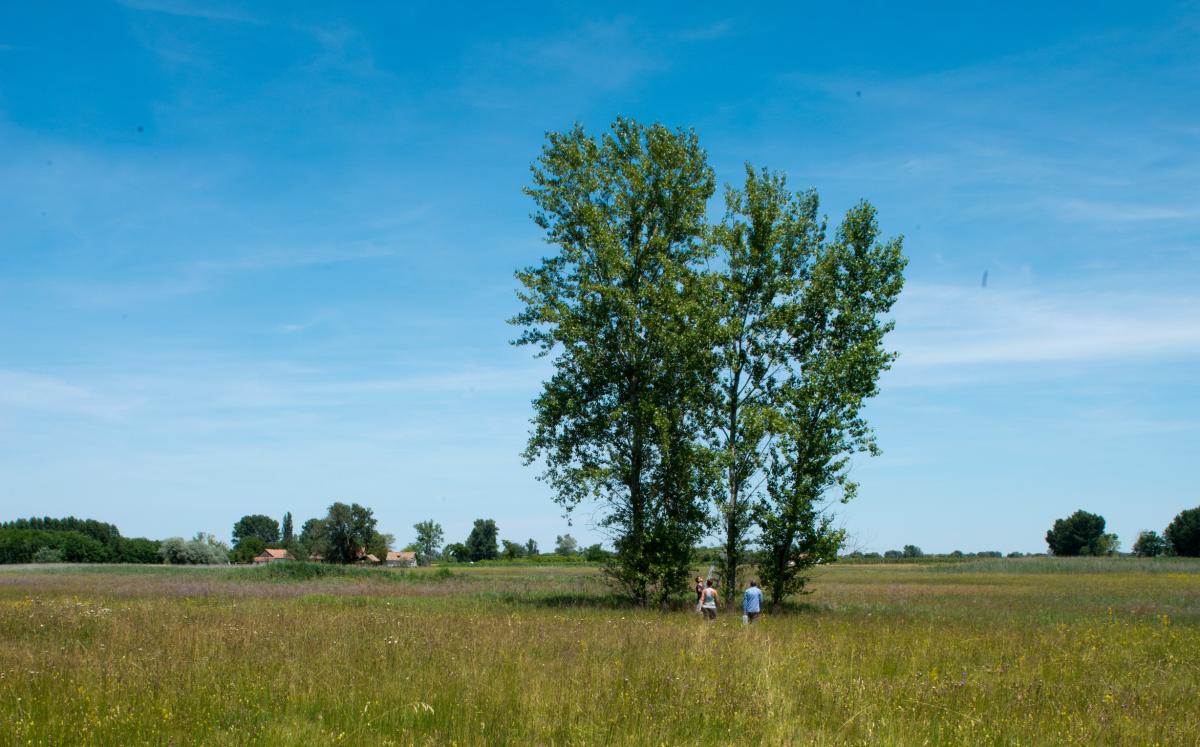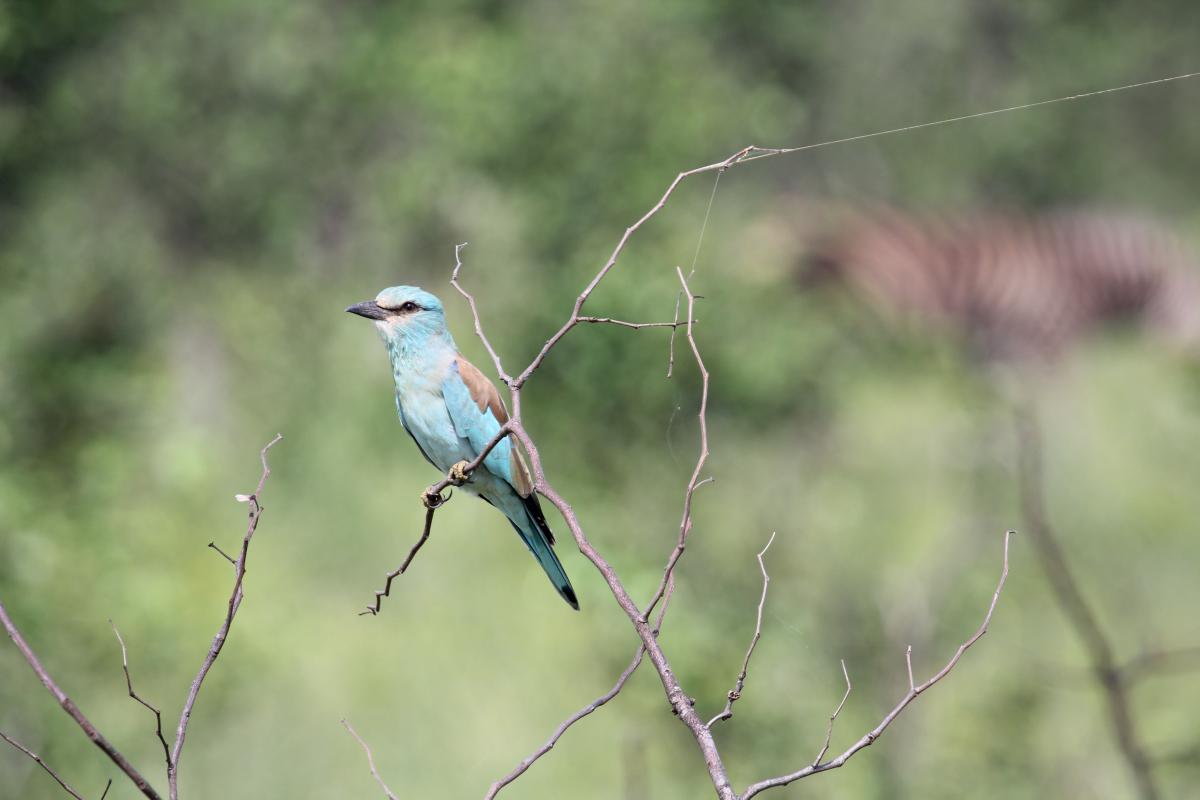Habitat
Being a lowland species, the European roller prefers open forest steppe habitat with a varied landscape. The size and number of suitable grasslands have reduced to a large extent over the last decades, so rollers have started using agricultural mosaic habitats in Europe.
Rollers are secondary cavity nesters and often use the abandoned holes of the green woodpecker (Picus viridis) and the black woodpecker (Dryocopus martius). Old open forest, or natural softwood floodplain forests are important breeding sites. The species occassionally nests in sand or loess banks, but this is fairly infrequent in the Carpathian Basin. Rollers also occupy artificial nestboxes.

Roller breeding habitat (Photo: György Horváth).
The species is a long distance migrant, spending the winters in the southern and eastern parts of Africa. In the African winter quarters, they particularly favour dry, bushy lands with a sprinkling of dead trees, especially areas prone to grass fires where they can feast on the charred remains of invertebrates, and can hunt for survivors from the bush-tops or from other high grounds.
The exact migration route is still unknown, although ring recoveries suggest that the Eastern European population migrates south through Greece and Italy, crossing the Middle East to reach Africa.

Roller wintering habitat, South Africa (Photo: Gergő Halmos).


















